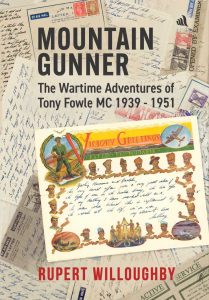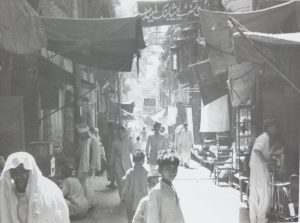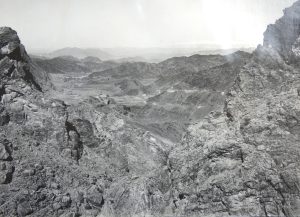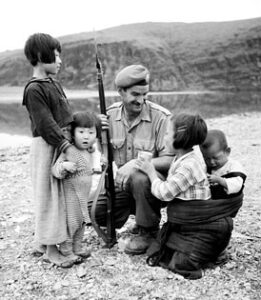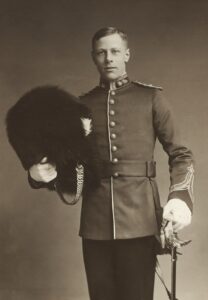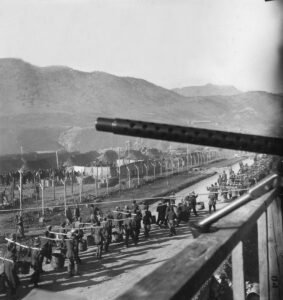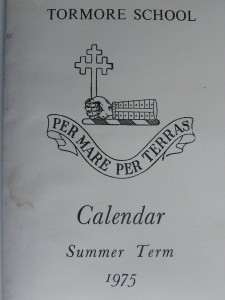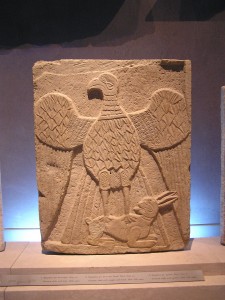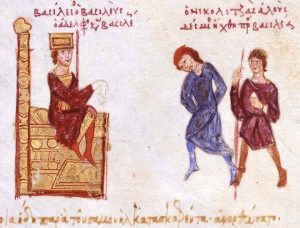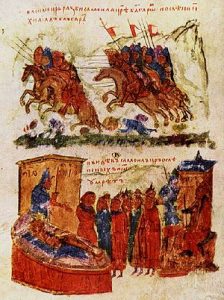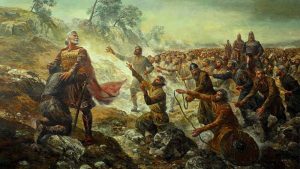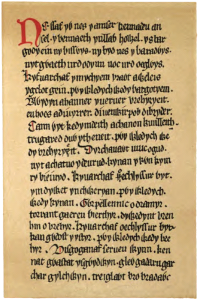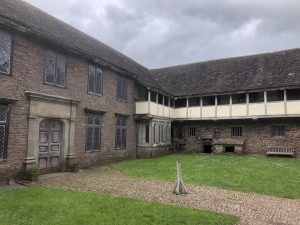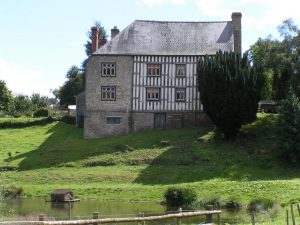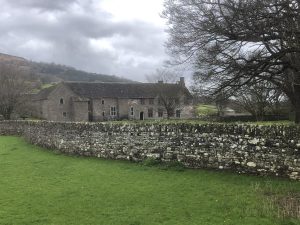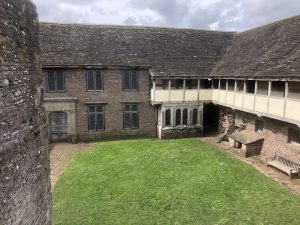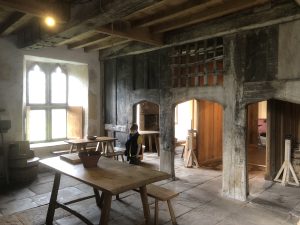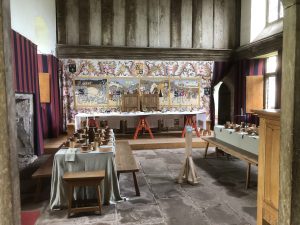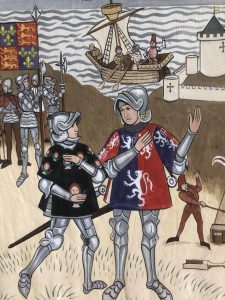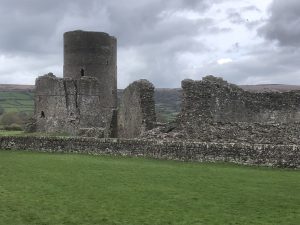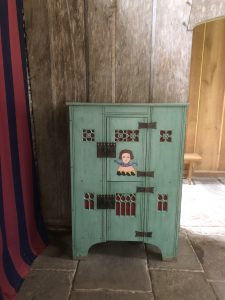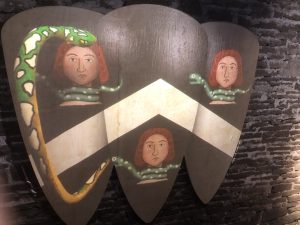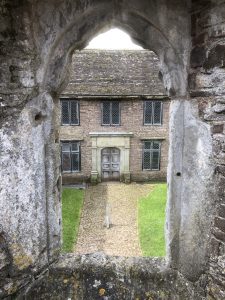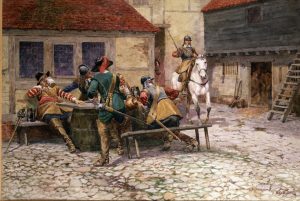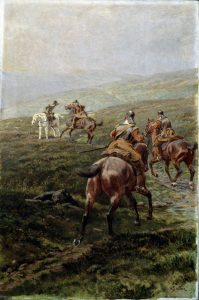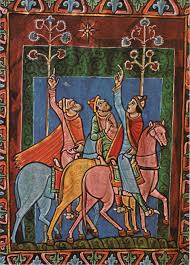With his tweed jacket and pipe, his neat moustache and his penchant for solitary fishing, Lieutenant-Colonel Tony Fowle, M.C., appeared in retirement to be the classically buttoned-up veteran, who had little to say about his years of service and even struck his children as ‘a tiny bit boring’.
That impression has been thoroughly revised since Tony’s death in 2016, aged 95. For the first time, they had access to the 230 wartime letters that, between 1939 and 1951, he had dutifully sent home to his parents. They proved to be an extraordinary record of his service, owing to the quality of the writing and to his descriptions of both well-known and obscure events, often in the most far-away places.
Tony is far from ‘buttoned-up’ in the letters, upon which Mountain Gunner, a new memoir of his wartime career, is based. Invited to be his companion on a great adventure, one cannot fail to like and admire him. He is committed, loyal, fearless, extraordinarily tough and, above all, boundlessly curious. To his children, the experience of reading these letters was like meeting him anew. Revealed at last was ‘that exciting and glamorous person we had always secretly hoped for as a father’.
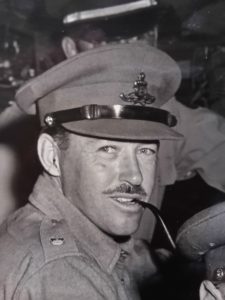 Tony’s ‘wartime’ years were almost entirely spent overseas – in the Middle East, in India, where he served on the North-West Frontier and in Kashmir, and, most dramatically, in Korea – so as much as this book is a military memoir, it is also a travelogue. From the moment he leaves England in February 1942, never having been anywhere more exotic than Bridlington, he is hooked. When his troopship anchors off Sierra Leone – with its coral reefs, bright blue waters and palm trees, not to mention Freetown, its sultry capital – Tony is beside himself with excitement.
Tony’s ‘wartime’ years were almost entirely spent overseas – in the Middle East, in India, where he served on the North-West Frontier and in Kashmir, and, most dramatically, in Korea – so as much as this book is a military memoir, it is also a travelogue. From the moment he leaves England in February 1942, never having been anywhere more exotic than Bridlington, he is hooked. When his troopship anchors off Sierra Leone – with its coral reefs, bright blue waters and palm trees, not to mention Freetown, its sultry capital – Tony is beside himself with excitement.
A trip to Zululand soon follows, then it is full sail to Egypt and a posting to 2 Royal Horse Artillery. Tony is present in February at the ferocious Battle of Knightsbridge in the Western Desert; in July, he is fatefully attached to the Indian Army, and instructed in Urdu. He serves with a regiment of Field Artillery, which ‘ships out’ while he is in hospital. Tony pursues them to an unknown location, somewhere in the mystic east.
Tony’s letters evoke the exhilaration of that epic journey, initially by train, through ‘wild desert’, the ‘beautiful’ coastal plain of Palestine, the flat, fertile Jazreel valley and the rugged country beyond. Clinging to vertiginous mountain-sides, the line follows the thundering River Yarmuk as it twists, turns and tumbles through spectacular gorges. It stops at Deraa, where Tony has an encounter worthy of T.E. Lawrence.
From Damascus, where he indulges his taste for antiquities, he speeds across Al-Anbar in a sixty-foot-long, stainless-steel, fully air-conditioned ‘Desert Pullman’, or, as Tony puts it, ‘a mechanical horse with the most massive engine standing eight feet from the ground’, courtesy of the Nairn Transport Company.
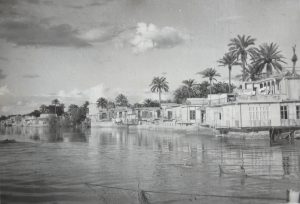
September 1942: from a pleasant camp beside the Tigris, Tony would be ferried across to Baghdad in a rowing boat.
Languishing at a holding camp in Baghdad, Tony is given a temporary job with the 1st Indian Anti-Tank Regiment, somewhat of a come-down for a proud gunner; but it is while commanding an outpost called ‘Hillside’ that he finds his true métier. The mountainous terrain, the abundant wildlife, the picturesque, if menacing natives, the cheerful, impeccable Indian soldiers under his command, the habitual tent-dwelling with the added chance of a ‘scrap’, and, above all, the lack of interference from higher authority are all entirely to his liking.
Thereafter, for most of the next three years, home for Tony is an eight-foot tent, pitched in a hole in the ground in a series of desert locations, most of them so remote that, even now, it is impossible to place them on a map.
There are various landmarks. Kirkuk can only be viewed from a distance, but seems to capture the essence of the Orient. ‘The road winds round the base of a high cliff; on the left a spring pours out from beneath two stone arches; round the spring, date palms and the most vivid green grass make the most striking contrast to the rocky desert and hills beyond. On the other side of the river, a huge rock rises from the bank crowned by the old walled town, like a cork of red stone, resting on its summit.’
While encamped in the desert west of Musayyib, Tony and his C.O. are fêted by a local sheikh. An excitable cavalcade of mounted tribesmen, each armed with a sword, dagger and rifle, escorts them through a cloud of dust to their desert fastness. They announce the guests with feus de joie and bloodcurdling yells; in their post-prandial war-dance, they are like ‘fiends in hell’.
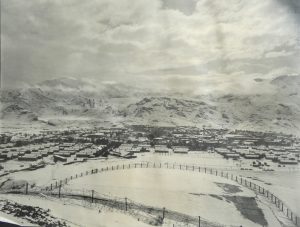
The location of this superior encampment in the Iraqi desert is not identified. Tony languished here during the harsh winter of 1943-4. Its amenities included a hospital and a well-stocked N.A.A.F.I. On New Year’s Day it was struck by a terrible storm.
An extended ‘Cook’s tour’ takes him through regions of Kurdistan (‘the grandest country I have ever seen’) and especially the Kifri Valley (‘a Paradise on Earth’). Meanwhile, he inures himself to the very harshest conditions, from intense ‘sticky’ heat in the summer to frost and snow in the winter, to raging winds that would blow away an entire encampment and rainstorms that would reduce it to a sea of mud, not to mention the endemic ‘bush sores’.
Then the regiment sets off on another thrilling adventure, entering Persia through the Zagros mountains. As the convoy of vehicles climbs ever higher, there is a dizzyingly sheer drop below; they zig-zag through woods of holm-oak that seem to grip the side of the cliff for dear life. Tony writes that ‘one could always be certain of seeing a lorry which has gone over the side’. Meanwhile, ‘the plain lay spread out below us like a gigantic map, pale blue in the gathering mist’.
Attracted by the pre-war mounted tradition of the Royal Artillery, Tony longs to serve with an Indian mountain gunner regiment. It is only in the Indian Army that mounted batteries survive, for deployment in mountainous, frontier regions that are unsuitable for vehicles. At last he is posted to such a regiment, which he joins in December 1944, at its garrison in Peshawar.
Occupying a ‘palatial’ bungalow in the cantonment, Tony makes a bee-line for the ‘Old City’. He describes Peshawar as a ‘hot-bed of murderers, blood-feuds, thieves and robbers dominated by the old Mughal fort and palace’. Foreigners enter it with caution. While roaming the hostile, fly-blown streets, Tony is conscious of being stared at by the locals, who seem astonished at his effrontery. He directs his camera at their sullen faces. On a later visit, while shopping at the ‘thieves’ market’, he bargains with a camel-driver in Pashtu.
Best of all are the opportunities to ride out with the regiment ‘in column’, an extraordinarily dignified and picturesque procession of mounted men and pack-mules laden with the disassembled guns, all of which hark straight back to the nineteenth century and the pages of Kipling.
There is a ‘Boy’s Own’ feel to Mountain Gunner which is quite deliberate. Chapter headings like ‘Desert Sands’, ‘The Cedars of Lebanon’, ‘From Landi Khotal to Kohat and Thal’ and ‘Shikar Stories’ intentionally convey that very spirit of adventure and wanderlust that inspired young readers in the past. The cover design is a montage of Tony’s letters; maps are reproduced from books that he might have picked up in the mess.
Above all, the dashing Tony is himself the consummate ‘Boy’s Own’ hero. He believes that ‘an officer ought to go out into the wilds’, to explore and accustom himself to rough terrain, and to do so was his own greatest pleasure. He had all the necessary skills to live off the land and the resilience to survive the odd night in a snow-filled dug-out, without food, extra clothing or even a tent, as was required of him in Korea in 1951. The courage and resilience of that generation – Tony served there mostly with National Servicemen or Reservists – was quite astonishing.
So this book is really about Tony’s discovery of himself and the sense of liberation he achieved in remote places, away from all the constraints and banalities of modern life. Witnessing a sunrise through the mists over the Khyber Pass, he is profoundly moved, for the snow-clad peaks ‘seemed to be floating about a hand’s breadth above the horizon; a sea of gold and scarlet completely detached from the earth’. A natural solitary, he is never happier than when hunting in the remote Indus valley, with only a native shikari to guide him. For four days they range through the mountains, covering about fifteen miles a day, bagging a haul of urial and a leopard.
These were precious, unrepeatable experiences and, after Korea, life for Tony, much of it office-bound, may well have seemed rather dull. This country can be proud of such splendid men. Brave, patriotic, uncomplaining, with inner reserves that ‘Gen Z’ could hardly imagine, they were a credit to their generation. Tony was a ‘cool dad’ indeed.
https://www.chiselbury.co.uk/bookstore/p/mountain-gunner?srsltid=AfmBOooujLZtp1i1upzkJWAH_0ARg-VCQIftgsMGrihZ9QRXitrFfZbS
Available on Amazon and from all good stockists.
See also previous entry on Korea.
